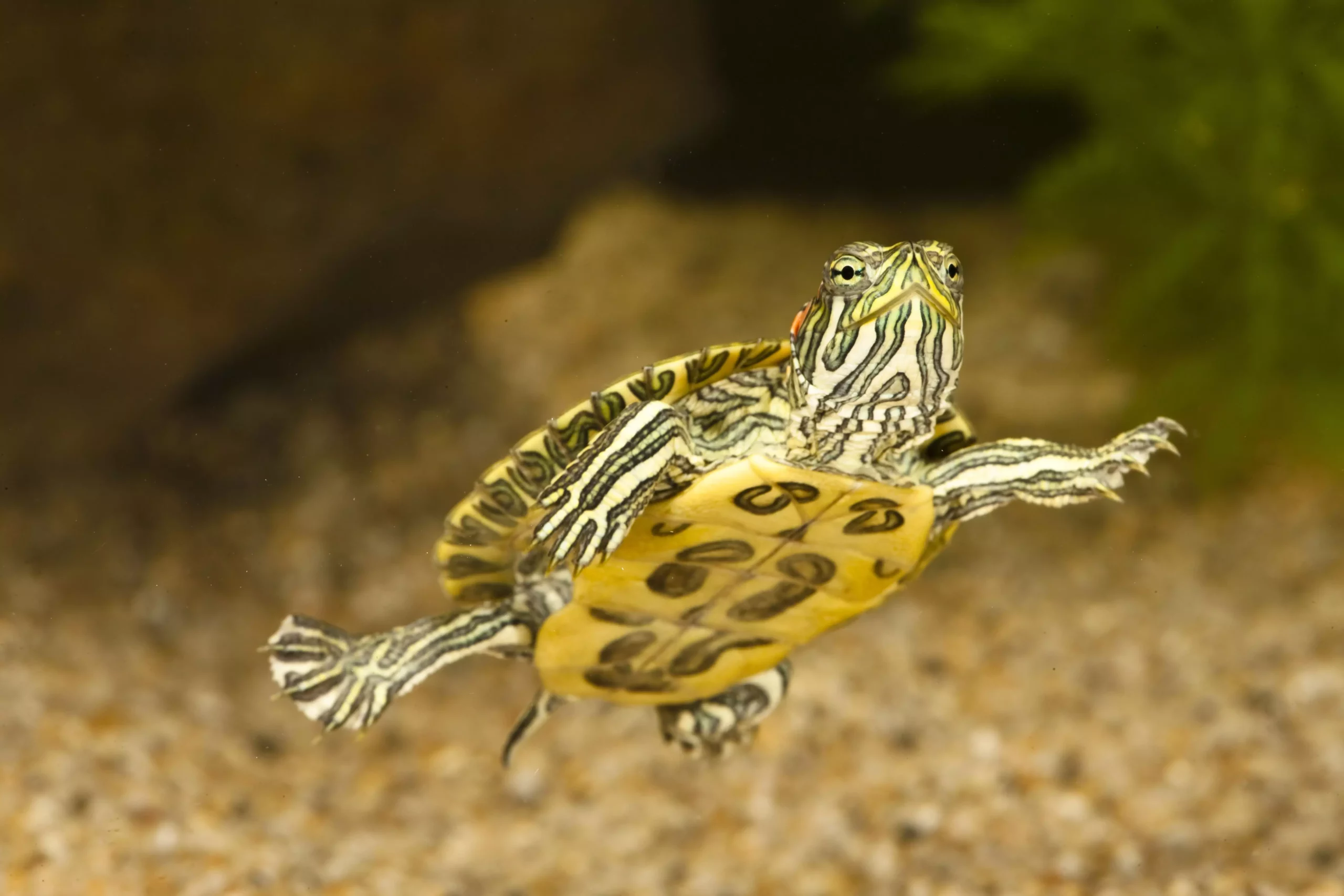Red-eared slider turtles, classified scientifically as *Trachemys scripta elegans*, rank among the most sought-after reptiles for pet lovers globally. Their distinct appearance, characterized by a vibrant green carapace and a signature red stripe behind each eye, combines beauty with a captivating personality. These turtles are native to the southern regions of the United States and demonstrate a remarkable ability to adapt to diverse aquatic environments, from tranquil ponds to meandering streams. Adult sliders can reach impressive lengths of around 12 inches, making them a notable presence in the pet landscape.
Their dietary preferences are equally fascinating; these turtles are omnivorous, consuming a balanced diet that includes a mix of plant materials and small aquatic creatures. This dietary flexibility, combined with their visually striking features, has contributed to their widespread popularity among reptile enthusiasts. For prospective owners, understanding how to choose and care for a healthy turtle is crucial—this includes knowing where to acquire one, recognizing its health indicators, and ensuring a suitable habitat awaits the new pet.
When considering adding a red-eared slider to your home, a methodical approach to selection is essential. Observing the turtle for specific health markers can help in identifying a healthy specimen. Key attributes to inspect include the shell condition—look for cracks or soft areas that might indicate prior neglect. The eyes should be clear and bright, devoid of discharge, as this can be a sign of respiratory issues. A lively disposition is another good signal; a healthy turtle is typically active and responds to stimuli in its environment.
Potential owners should also scrutinize for signs of any respiratory distress. Unusual wheezing or nasal discharge might indicate illness. Consulting with reputable breeders or veterinarians before finalizing your choice further ensures that the red-eared slider is in good health and free from concealed ailments.
Creating a suitable environment for your red-eared slider is critical, especially considering their growth into sizable adults. Young turtles can comfortably reside in smaller aquariums; however, as they mature, their habitat must expand significantly, ideally to tanks that can hold over 100 gallons of water. Unique housing solutions like pre-formed plastic pond liners can simulate a more natural pond environment, catering to their semi-aquatic nature.
For those with outdoor spaces, a securely fenced yard with a pond can offer an enriching habitat, allowing the turtles to enjoy natural sunlight and fresh air. Regardless of whether the turtle lives indoors or outdoors, keeping the water quality in check is of utmost priority, along with providing supplemental heat and UVB lighting to facilitate their health.
Nutritional Needs and Feeding Practices
A balanced diet is paramount for red-eared sliders, which includes both animal matter and plant-based options. Commercial turtle pellets can represent a solid nutritional foundation but should always be supplemented with a variety of fresh ingredients. It’s advisable to feed your turtle outside its main habitat to help maintain cleanliness within the tank, which significantly benefits overall water quality and your turtle’s health.
Ensuring that the turtle does not become overweight is also vital; overfeeding can lead to obesity and other health concerns. Monitoring your turtle’s diet as it matures is important as its dietary preferences may shift towards a more herbivorous focus.
Understanding the behavior of red-eared sliders can enhance their care and help pet owners meet their needs effectively. Common behaviors to observe include basking under heat sources to regulate their temperature, swimming, and exploring hiding spots for security and comfort. Particularly during feeding time, their eagerness is often evident, reflecting their active feeding habits.
Female sliders may also engage in nesting behavior, including burying eggs in suitable locations. This natural instinct emphasizes the importance of providing a dedicated nesting area, especially for females, to prevent potential health complications from retained eggs. Moreover, males display territorial characteristics, particularly during mating seasons. Recognizing these behaviors can significantly improve the pet-owner relationship.
Awareness of your turtle’s normal behavior is essential in identifying potential health concerns. Signs of lethargy or a sudden decrease in appetite can indicate underlying health issues, while any noticeable respiratory difficulties warrant immediate veterinary attention. Changes in shell condition are also vital to monitor, as they could signify nutritional deficiencies or infections.
If aggressive behavior or excessive hiding becomes noticeable, it may point to stress or overcrowding within the habitat. In such cases, adjustments may be necessary to create a more conducive space for your pet.
While information about salmonella risks related to pet turtles often gets media attention, managing these risks is relatively straightforward. Similar to other household pets, emphasizing good hygiene practices—specifically thorough handwashing after handling your turtle—can vastly reduce the chances of infection. Thus, prospective owners need not be overly apprehensive but rather educated on safe interactions with their pet.
Ultimately, with proper care, attention to habitat, diet, and behavioral understanding, red-eared slider turtles can thrive as captivating companions for years to come.

